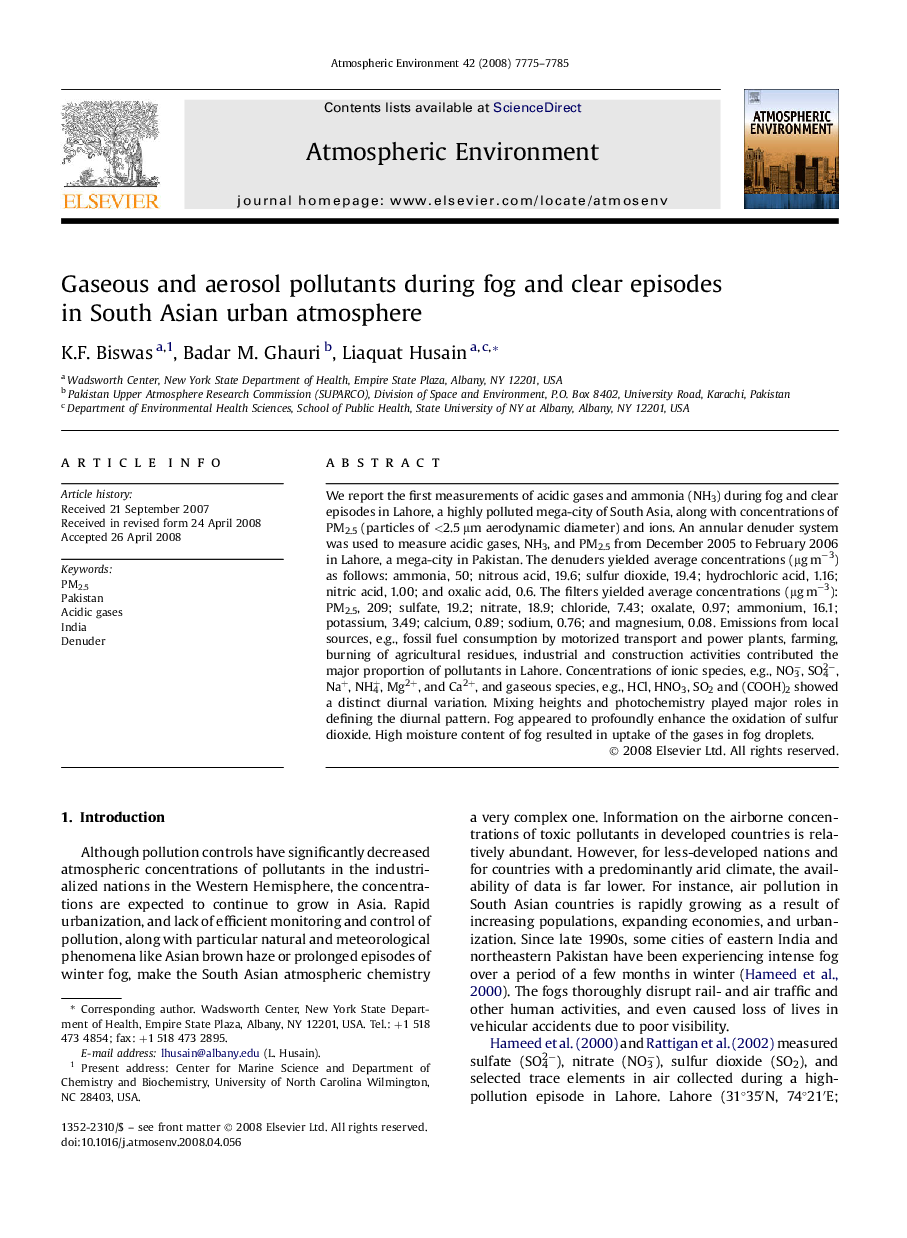| Article ID | Journal | Published Year | Pages | File Type |
|---|---|---|---|---|
| 4441625 | Atmospheric Environment | 2008 | 11 Pages |
We report the first measurements of acidic gases and ammonia (NH3) during fog and clear episodes in Lahore, a highly polluted mega-city of South Asia, along with concentrations of PM2.5 (particles of <2.5 μm aerodynamic diameter) and ions. An annular denuder system was used to measure acidic gases, NH3, and PM2.5 from December 2005 to February 2006 in Lahore, a mega-city in Pakistan. The denuders yielded average concentrations (μg m−3) as follows: ammonia, 50; nitrous acid, 19.6; sulfur dioxide, 19.4; hydrochloric acid, 1.16; nitric acid, 1.00; and oxalic acid, 0.6. The filters yielded average concentrations (μg m−3): PM2.5, 209; sulfate, 19.2; nitrate, 18.9; chloride, 7.43; oxalate, 0.97; ammonium, 16.1; potassium, 3.49; calcium, 0.89; sodium, 0.76; and magnesium, 0.08. Emissions from local sources, e.g., fossil fuel consumption by motorized transport and power plants, farming, burning of agricultural residues, industrial and construction activities contributed the major proportion of pollutants in Lahore. Concentrations of ionic species, e.g., NO3−, SO42−, Na+, NH4+, Mg2+, and Ca2+, and gaseous species, e.g., HCl, HNO3, SO2 and (COOH)2 showed a distinct diurnal variation. Mixing heights and photochemistry played major roles in defining the diurnal pattern. Fog appeared to profoundly enhance the oxidation of sulfur dioxide. High moisture content of fog resulted in uptake of the gases in fog droplets.
